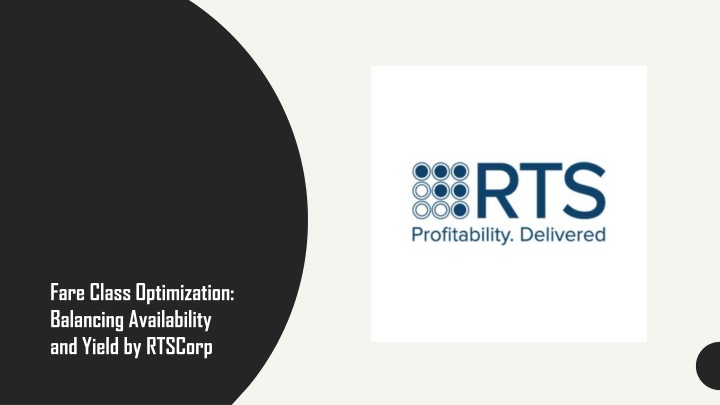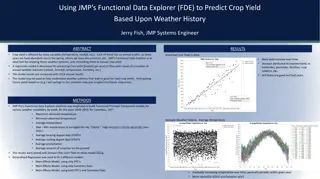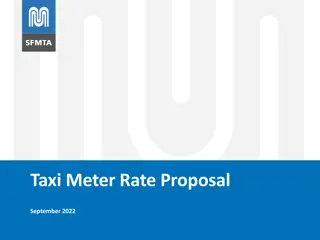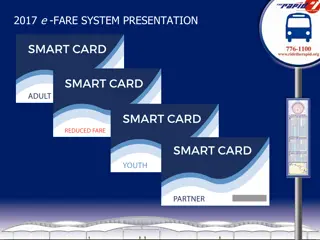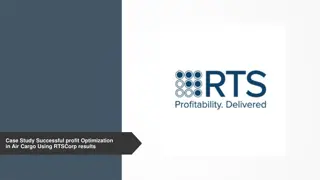Fare Class Optimization- Balancing Availability and Yield by RTSCorp
In the ever-evolving landscape of commercial aviation, profitability hinges on a delicate balance between maximizing seat occupancy and ensuring each seat sold contributes meaningfully to the bottom line. This is where airline yield management comes
Download Presentation

Please find below an Image/Link to download the presentation.
The content on the website is provided AS IS for your information and personal use only. It may not be sold, licensed, or shared on other websites without obtaining consent from the author.If you encounter any issues during the download, it is possible that the publisher has removed the file from their server.
You are allowed to download the files provided on this website for personal or commercial use, subject to the condition that they are used lawfully. All files are the property of their respective owners.
The content on the website is provided AS IS for your information and personal use only. It may not be sold, licensed, or shared on other websites without obtaining consent from the author.
E N D
Presentation Transcript
Fare Class Optimization: Balancing Availability and Yield by RTSCorp
In the ever-evolving landscape of commercial aviation, profitability hinges on a delicate balance between maximizing seat occupancy and ensuring each seat sold contributes meaningfully to the bottom line. This is where airline yield management comes into play a strategy that s revolutionized the way airlines sell seats and manage revenue. At the forefront of this strategy is Fare Class Optimization, a critical component championed by industry leaders like RTSCorp. Fare class optimization refers to the dynamic allocation of airline seats across various fare classes to optimize revenue. Every flight has multiple fare classes, each with its own pricing and booking restrictions. The goal is not just to fill the plane but to fill it with a profitable mix of passengers some booking early at lower fares, others paying more for flexibility and last-minute travel. RTSCorp has developed advanced fare class optimization systems that harness big data, machine learning, and real-time market insights. These systems help airlines adjust seat availability across fare classes in response to booking patterns, demand fluctuations, and competitive pricing. Here s how it works: as bookings come in, the system constantly evaluates how many seats should be allocated to each fare class. For instance, if demand is high, the algorithm might restrict access to lower fare buckets, preserving more inventory for higher-paying customers. Conversely, in periods of low demand, more seats might be opened at lower fares to stimulate bookings. This continuous re-evaluation enables airlines to respond fluidly to market conditions while safeguarding overall revenue potential.
The power of RTSCorps solution lies in its ability to analyze complex variables such as historical booking trends, seasonality, and route- specific behaviors while reacting to real-time inputs. This not only boosts yield per passenger but also enhances load factors without sacrificing profitability. Airline yield management has always been a game of anticipation and precision. With RTSCorp s fare class optimization tools, airlines gain the predictive intelligence needed to make smarter, faster decisions. The result? A fine-tuned balance between seat availability and revenue yield that supports sustainable growth. Moreover, as the aviation industry becomes increasingly competitive, the ability to optimize fare classes in real time is no longer optional it s essential. RTSCorp s innovative approach ensures that airlines remain agile, profitable, and customer-focused, even in the face of market volatility. In conclusion, chow class optimization is a foundation of effective airline yield management. By leveraging RTSCorp s cutting-edge technologies, airlines can achieve the perfect synergy between pricing strategy and capacity control ultimately turning every seat into a strategic asset.
